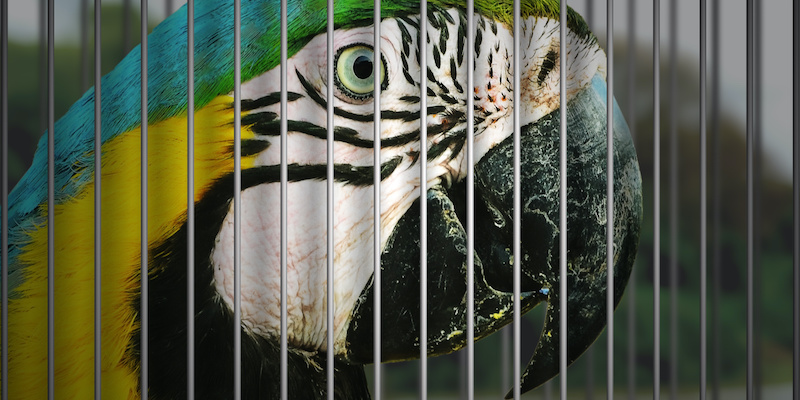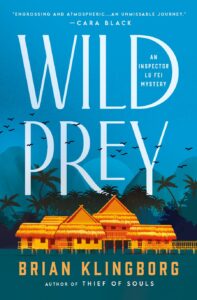Some years ago, while traveling through a small village in Vietnam, I encountered on odd and frightening-looking animal. The beast had a long tail, sharply pointed snout, huge razor-sharp claws and was completely covered in thick, armored plates.
Granted, this creature was about the size of a house cat and pickled in a big bottle of alcohol, but nevertheless, I found its appearance alarming. Given the language barrier, my hosts couldn’t tell me its English name, but I understood the purpose of steeping it in alcohol was medicinal—an occasional nip from the bottle served to balance one’s qi and alleviate certain ailments.
Naturally, I took a picture of this oddity and posted it on Facebook. Not long after, I received a comment from an acquaintance who railed angrily against the poaching and trafficking of an endangered species. At first, I was a bit insulted—how dare she be so insensitive as to criticize my hosts. What right did she have to apply her first-world values to a people and culture she knew nothing about?
The animal was, of course, a scaly anteater—otherwise known as a pangolin. And later, after I came to understand more about illegal wildlife trafficking, I realized my acquaintance may have come on a bit strong, but her heart was in the right place.
Like most Americans, I consider myself an animal lover. Growing up as the son of a veterinarian, we always had a menagerie around the house—dogs, cats, rabbits, even a modest flock of sheep. But I never gave much thought to the poaching and exploitation of wild animals. Apparently, I’m not alone—according to a survey by the Association of Zoos & Aquariums’ Wildlife Trafficking Alliance, 75% of Americans oppose wildlife trafficking, but most are unaware that it’s even an issue.[i]
So, aside from the obvious—the killing, mutilation, and mistreatment of innocent creatures—why should we care about wildlife trafficking?
Well, for one thing, it drastically alters the delicate balance of nature in all sorts of insidious ways. When a particular species is overexploited, poached, or even wiped out, it has a domino effect. The animals or insects it depended on for food might suddenly proliferate in a destructive manner; in turn, the species that depended on it for food might starve to death; and plants and trees that enjoyed a symbiotic relationship with the target species will suffer. In short, the incredibly complex web of life will be thrown completely out of whack.[ii]
Aside from ecological concerns, if there’s anything the past couple of years has taught us, it’s that the fate of animals and humans is inescapably intertwined. The World Health Organization has determined that COVID-19, just like SARS, Ebola, Bird Flu, and MERS, likely originated from an animal.[iii] And there is even speculation that COVID-19 originated in our old friend, the pangolin—scientists discovered that a group of smuggled pangolins recently seized in Vietnam were carrying covid related viruses.[iv]
Beyond ecology and animal welfare there’s now another reason to worry about the illegal animal trade—it’s become a multi-billion-dollar business for international criminal organizations. The demand for wildlife products and the global nature of the trade have attracted transnational criminal gangs previously content to focus on the trafficking of drugs, humans, and weapons.[v]
Getting into the animal trade makes good business sense, criminally-speaking, because international smugglers already have well-established logistical networks that can move animal products just as easily, or even more so, than other contraband. And as a bonus, the penalties for getting caught with a basket of pangolins is far lower than as with a kilo of heroin, an AK-47, or a sex-trafficked human being.
The plot of my forthcoming book, “Wild Prey” (Minotaur, 5/17), revolves around the illegal animal trade: while running a sting operation on the sale and consumption of rare and endangered animal products, Inspector Lu Fei discovers that a waitress has gone missing from a restaurant that specializes in contraband items—tiger penises, pangolin scales and so forth—which are believed to promote health, longevity, and virility. To uncover her whereabouts, he travels deep into the lawless wilds of Myanmar and infiltrates the hidden lair of a mysterious warlord.
The story may seem very James Bondian, but it’s all rooted in fact. Myanmar is the largest country in mainland Southeast Asia. Since achieving independence from the British in 1948, Myanmar has been mired in constant civil war waged by various ethnic groups seeking autonomy from the central government. Many of these groups are highly militarized – basically, private armies bristling with military equipment, guns, and even anti-aircraft missiles. And some of these militias have traditionally supported themselves through drug cultivation and manufacturing—in fact, Myanmar is the world’s largest producer of opium after Afghanistan.
Over the years, the Myanmar government has attempted to quell the heroin trade, with mixed success. And unfortunately, according to the U.N. Office on Drugs and Crime (UNDOC), drug manufacturing has experienced a resurgence following the recent coup.[vi] What’s more, drug traffickers are expanding into lucrative new ventures, such as methamphetamines, and, increasingly, the illegal animal trade. A recent report from the World Wildlife Fund finds that the chaotic political situation in Myanmar has weakened efforts to combat poaching and trafficking of animals such as elephants, civets, monkeys, bears, gibbons, antelope, tortoises, and pangolins.[vii]
So, what can we do to help? First, be aware that animal trafficking is a problem, even if you don’t immediately see the effects in your backyard. And take note of products you may encounter that are the result of the illegal animal trade, such as exotic meat, fins, medicinal products, feathers, and shells.
Other ways to do your part include: asking the source of a product before you buy it; eating sustainable food; choosing eco-friendly pets; petitioning your local government to restrict the ivory trade; supporting wildlife conservation organizations; and reporting wildlife crimes anonymously to https://wildleaks.org/.[viii]
***
[i] https://wildlifetraffickingalliance.org/wp-content/uploads/2019/06/PG-AZA-2018-Q2-report-v1.1_wildlife-trafficking-Read-Only.pdf
[ii] https://www.worldwildlife.org/threats/illegal-wildlife-trade
[iii] https://www.oecd.org/gov/illicit-trade/coronavirus-covid19-and-wildlife-trafficking-brief.pdf
[iv] https://www.usnews.com/news/health-news/articles/2022-03-11/vietnamese-pangolins-carry-covid-like-coronavirus#:~:text=FRIDAY%2C%20March%2011%2C%202022%20(,CoV%2D2%2Drelated%20coronaviruses.
[v] https://www.americanbar.org/groups/environment_energy_resources/publications/es/20211109-disrupting-the-illegal-wildlife-trade/
[vi] https://www.reuters.com/world/asia-pacific/drug-trafficking-surging-year-since-myanmar-coup-2022-02-01/#:~:text=In%20neighbouring%20Thailand%2C%20a%20traditional,Narcotics%20Control%20Board%20(ONCB).
[vii] https://www.usnews.com/news/news/articles/2022-03-31/wwf-report-says-online-wildlife-trade-on-rise-in-myanmar
[viii] https://www.ecohealthalliance.org/2017/10/7-ways-you-can-help-stop-the-illegal-wildlife-trade


















